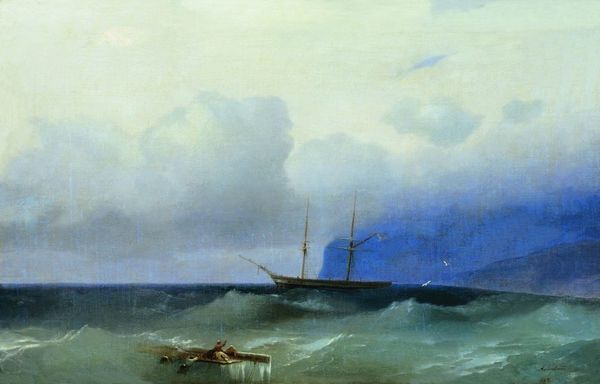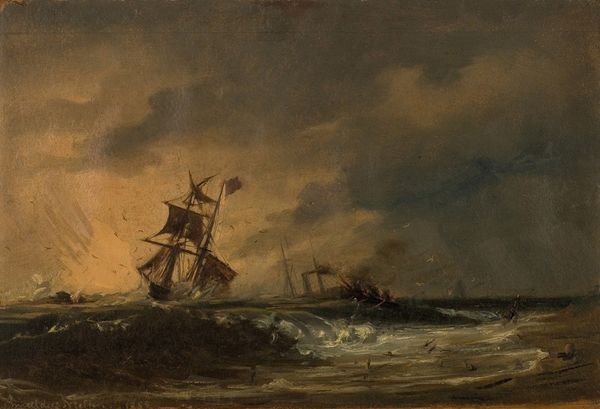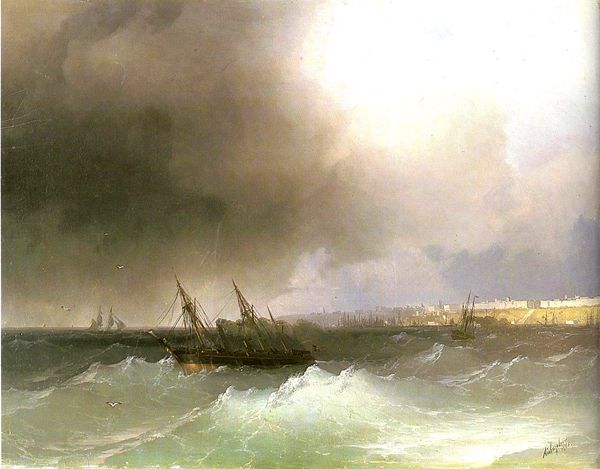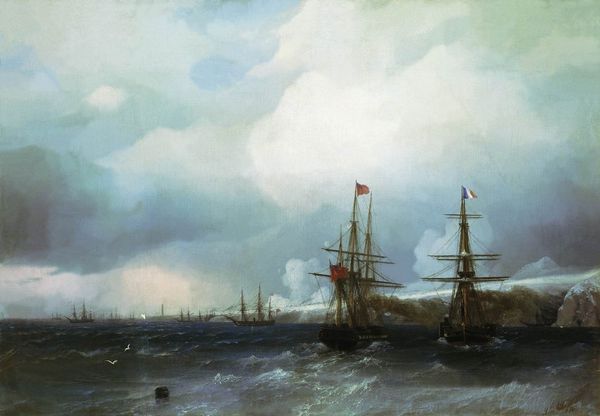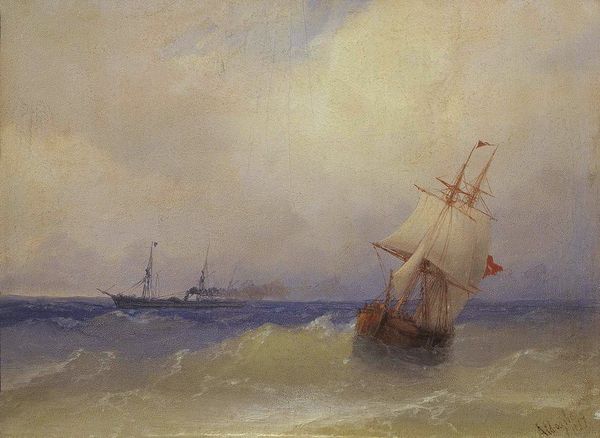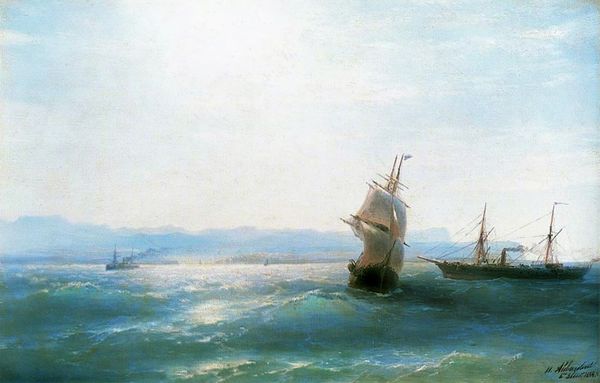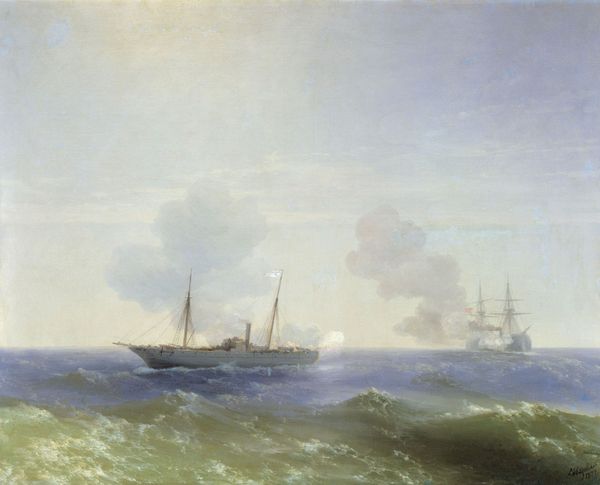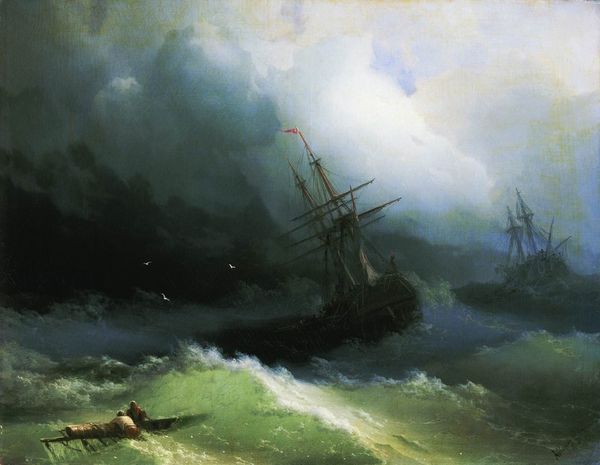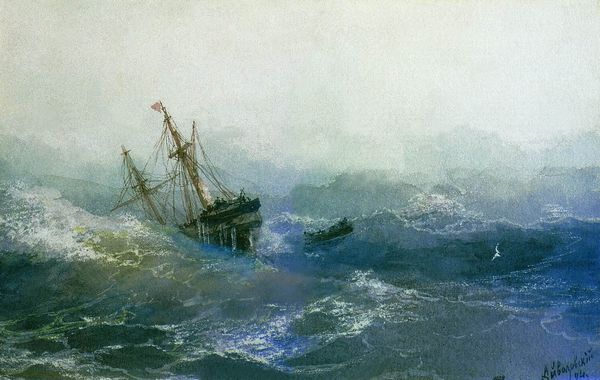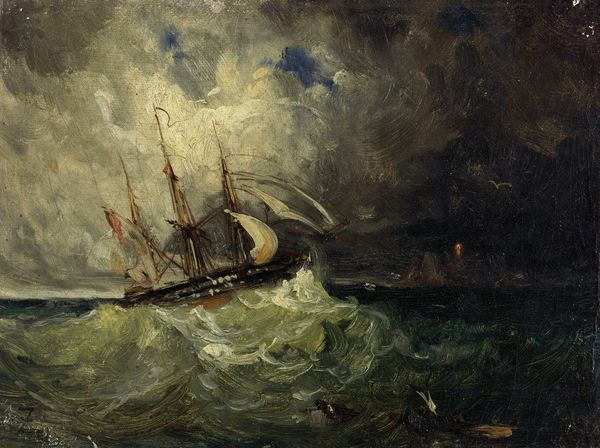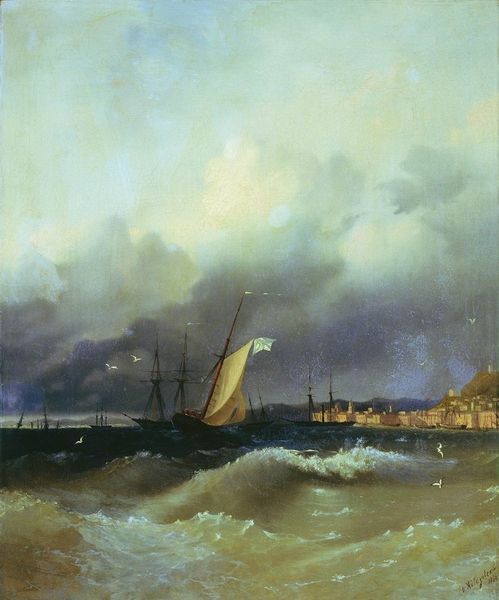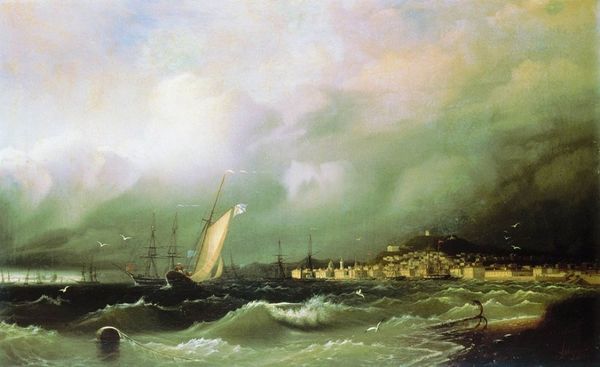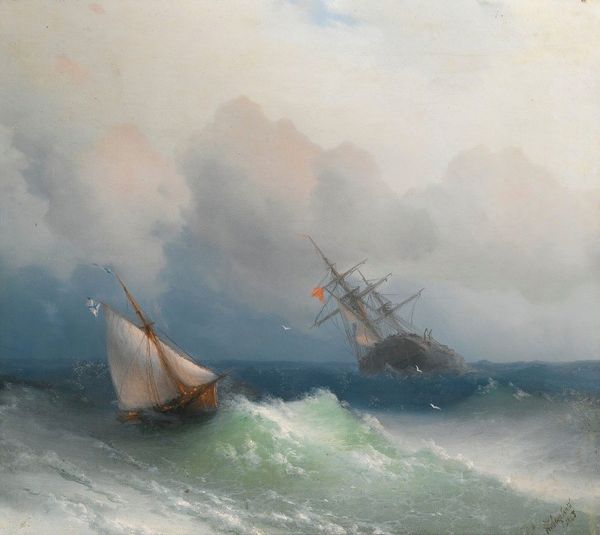
Dimensions: 36 x 48 cm
Copyright: Public domain
Editor: This is "Sea before storm" by Ivan Aivazovsky, created in 1856 using oil paint. The impending darkness of the storm hangs heavily over the scene. I'm struck by the contrast between the small figure on the shore and the vast, turbulent sea. What do you see in this piece? Curator: I'm immediately drawn to the duality, a recurring motif in Aivazovsky's work: the power of nature versus human resilience. Look at how the dark, ominous clouds contrast with the hopeful sliver of light on the horizon. This interplay isn’t merely aesthetic; it's deeply symbolic. Editor: Symbolic of what, exactly? The press release spoke of romanticism. Curator: Precisely. Remember, romanticism prized emotionality, individual experience, and nature's sublimity. Here, the sea is not just water; it embodies the unpredictable, often unforgiving forces that shape human destiny. The fisherman seems almost defiant. Can you feel that tension, that silent challenge between humanity and the elements? What stories do you imagine are evoked in the work's use of light? Editor: Yes! I see that now – a challenge to the elements, yet small on the overwhelming backdrop of the sea. The lighting feels ominous, hinting at both the immediate storm and maybe a more lasting struggle. It evokes feelings of loneliness and fear, but also a certain stubbornness in the fisherman. Curator: Indeed! It speaks volumes about cultural memory as well. Aivazovsky, being Armenian, often embedded themes of struggle and endurance within his seascapes. Think of the historical context, the Armenian people's continuous battle for survival, mirroring that figure braving the storm. Editor: That’s a perspective I hadn't considered. I was so focused on the immediate drama that I missed the broader cultural narrative. I’ll certainly look at art differently from now on. Curator: And I am prompted to reflect further on the historical lens through which we see his work. There's always more to uncover when you start digging beneath the surface.
Comments
No comments
Be the first to comment and join the conversation on the ultimate creative platform.
